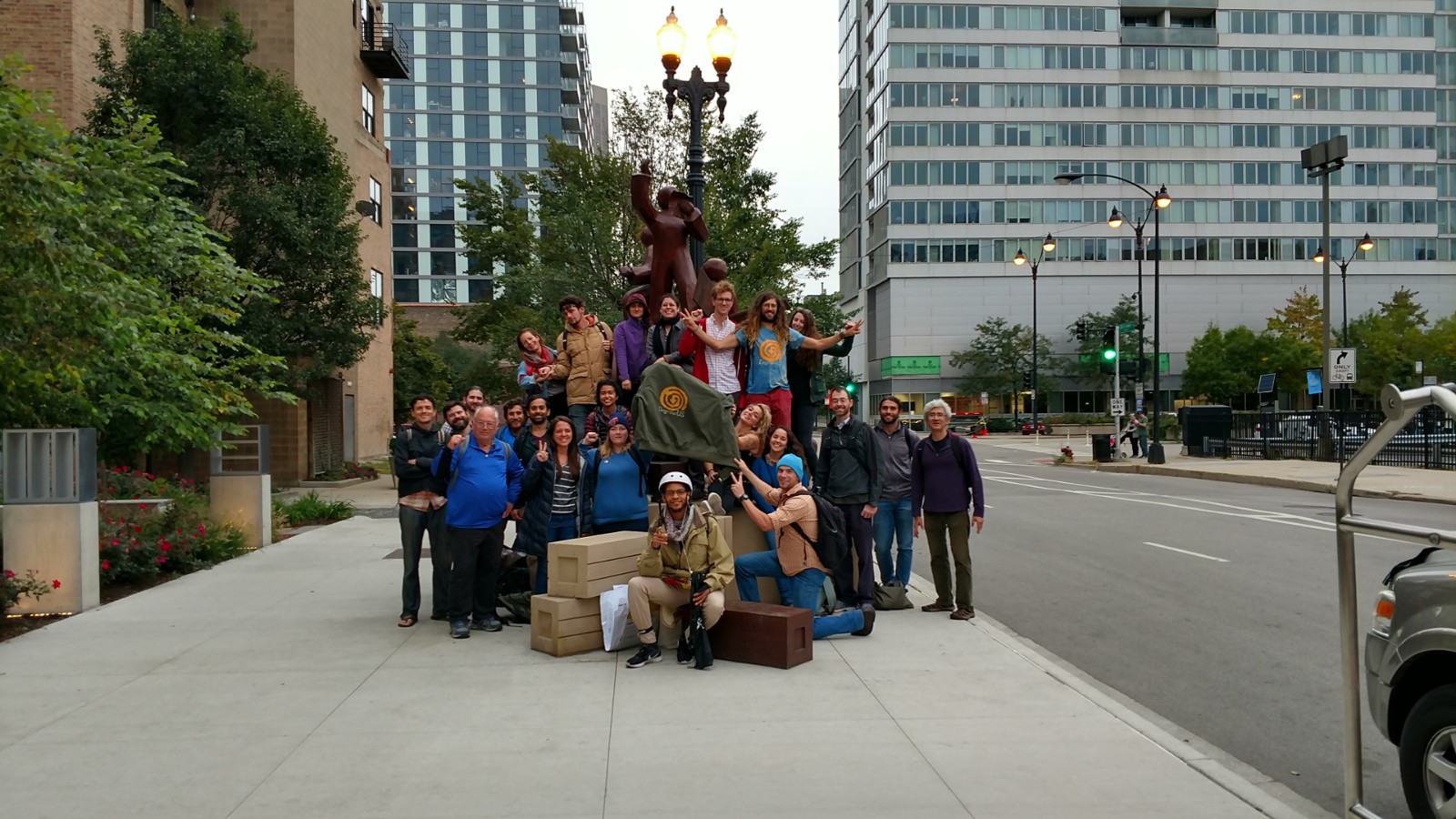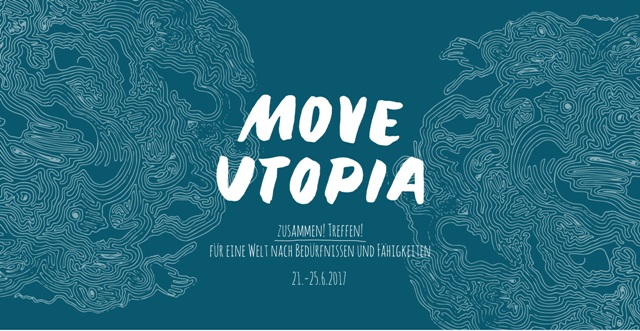By Xavier Renou
Civil disobedience shares a lot with the degrowth idea and movement. In the past, civil disobedience proved to be a powerful tool to fight for equal rights, labor rights, independence, peace and political liberation. Thanks to a growing awareness, an increasing number of struggles involving civil disobedience and non-violent direct actions have been influenced by if not conducted in the name of degrowth-related values, visions or claims, in Europe alone. These have included actions to stop mining projects, to introduce radical changes in energy and water, to oppose major infrastructural projects of airports, highways and fast train railways etc.
As it is sometimes necessary to disobey to live according to degrowth principles, some struggles involving civil disobedience have been directly initiated by degrowth activists. For example, in France in 2011, squatter camps were installed in several cities and successfully opposed a law targeting free housing and the right to self-build one’s home. The mass mobilization against the introduction of genetically modified crop in France by the end of the 1990, which saw hundreds of people taking part in the uprooting of GM fields, was largely motivated by degrowth (and the same in Spain and Belgium), as was the battle for the right to grow and trade traditional seeds following an international campaign of civil disobedience called “Act for seeds", initiated by Indian activist Vandana Shiva. Civil disobedience has been used against advertising - with activists provoking trials by painting billboards - or new intrusive technologies, e.g. neo-luddite mobilizations such as those against nanotechnologies in the UK and France. In the emblematic case of Catalan degrowth activist Enric Duran, acts of “financial civil disobedience” were directly aimed at sponsoring degrowth. Duran openly, in his own words, “expropriated” 492,000 euros from 39 banks, drawing attention to the unsustainable Spanish credit and banking system, just before the crisis imploded in 2008. Duran, who used the money to fund alternative movements and projects, including many related to degrowth, declared that had no intention to repay the debt and was prepared to face the consequences and go to jail.
In general, civil disobedience is a political method of resistance which consists in a collective action of disobedience to a law considered unjust. To be “civil”, as US intellectual Henry David Thoreau in the 19th century called his first actions of resistance to the war against Mexico, one must be willing to break the law in the name of conscience. To Thoreau, this would never be an act of delinquency done secretly for individual interests, but must be perpetuated openly. In the 20th century, the Indian activist and leading figure of civil disobedience, Gandhi, added a crucial dimension: an exclusive stance of non-violence which entailed the will (the result being always beyond will) to harm the adversary, his or her human person and psychology as well as his or her family and goods, as little as possible. He rejected the old, ends justify the means view. To Gandhi, the ends were in the means; it was not possible to achieve just goals with unjust means. He considered non-violent means the only way to convince the public that his ends were just and that the struggle should therefore be supported.
Quite near to civil disobedience are the concepts of direct action and conscientious objection, also called non-cooperation, a possible first step towards civil disobedience and the collective organization of one's refusal. French La Boetie, in the 16th century, expressed the idea that in order to keep oppressing them tyrants need the people's cooperation: the tyrant never has enough police to force every single subjects to constantly obey order. In other words, the tyrant needs our cowardly acceptance and daily obedience to maintain power. Stopping to cooperate with what offends our consciousness is therefore a moral obligation and a principle of coherence. Direct action is the twofold idea that we should act directly when offended, without waiting for others - such as elected people - to act in our name. The concept holds that we should act directly on problems and their origin. Non-violent direct action is a version of this political strategy. It strictly prohibits the use of violence and therefore greatly resembles the concept of civil disobedience but without the necessity to break any law. When one disobeys an unjust law this is indeed a non-violent direct action: building dry toilets in one’s home as a form of resistance to water contamination is also a non-violent direct action, although perfectly legal.
The political struggles related to the concept of degrowth remind degrowth activists that fighting the law through civil disobedience might be necessary. They will not save themselves by changing their way of life while the world around them is collapsing, and they will not defeat capitalism and productivism only by the virtue of their example, as the “utopian socialists” of the 19th century or the hippies of the 1970s thought they could do.
On the other hand, civil disobedience and non-violent direct actions are primarily methods and tactics and are sometimes chosen by activists who have nothing to do with environmental and progressive values, such as anti-abortion activists. Nonetheless, tactics are not neutral and can’t be successful if not supported by strong values. These values are often very close to those of degrowth supporters. First, the value of direct action, including the rule of direct democracy, often refers to consensus-based decision-making processes and leaderless movements. Second, the value of a pragmatic approach relates to keeping an open mind to differences and the choice of realistic and reachable objectives, with trial-and-errors-based processes as opposed to dogmatic postures and too abstract and unrealistic objectives. Third, because activists know they can be wrong just like anybody and they know they can be misled by their conscience, they choose not to cause damages that would be irreversible – as damages provoked by the use of violence are – by practicing non-violence against humans. This non-violence includes, increasingly, life and goods in general.
Last, it is the search for coherence between values and actions which has driven some of the main figures in the history of civil disobedience to live according to principles strongly resembling those of degrowth: Thoreau practiced and advocated self-sustainability, Tolstoï and Gandhi distributed their goods and embraced sobriety. The three of them shared a strong concern for the environment and all living creatures. Gandhi also insisted on the need for campaigns of civil disobedience driven by a pragmatic, alternative/constructive program. Obstructive programs of civil disobedience get more momentum and strength if stimulated by a constructive program and positive alternatives to oppression that show what a victory could lead to. Many civil disobedience activists consider degrowth to be a constructive program of that sort, a possible response to what they're struggling against, which is often capitalism. Degrowth-related solutions were articulated with civil disobedience in most of the recent campaigns mentioned above, with encampments involving collective kitchens based on vegan, organic or recycled free food, alternative moneys or bartering, dry toilets and solar powered low technology showers, etc. These acts of disobedience prove that it is possible to create strong resistance and build up degrowth-compatible alternatives, both at the same time.

“When you told your friends and family you were going to a degrowth gathering, they asked, ‘What is degrowth?’ How did you respond?” The 2018 degrowUS gathering from September 28-30 2018 in Chicago began with this question. The first day’s thirty-odd attendees wrote their responses on sticky notes as they scraped the last bites of lunch off the dishes the event’s organizers had told them to ...

Zusammen!Treffen! für eine Welt nach Bedürfnissen und Fähigkeiten. MOVE heißt: Wir möchten Miteinander Offen Vertrauensvoll Emanzipatorisch ... die Zukunft gestalten! Wir teilen die Vision, überkommene Verhältnisse menschlicher Vereinzelung ab- und neue Formen des Zusammenlebens aufzubauen. Wenn wir Bedürfnisse und Talente offen teilen und mitteilen, kann eine neue Art von Beziehungen entsteh...
By Corinna Burkhart Humans get used to quite a lot of things and live their daily life through a set of what we can call habits. Everyday experiences are not much worth a thought as long as everything is like it always is. This can be driving by car to town, only to get stuck in the usual traffic jam, or something very simple like flushing the toilet or using knife and fork to eat a grilled pi...